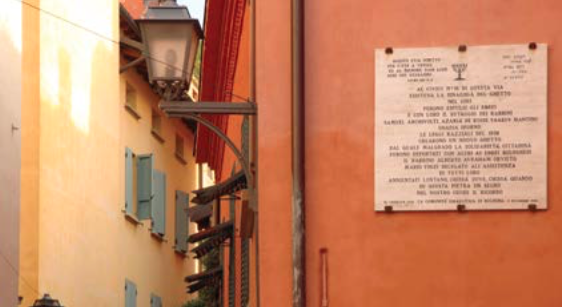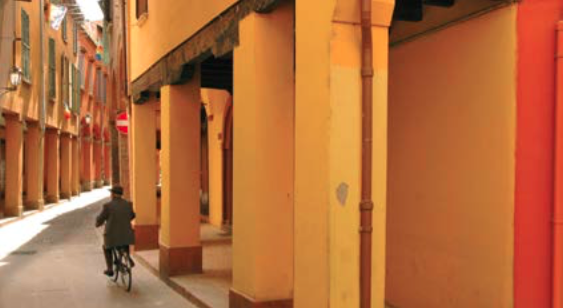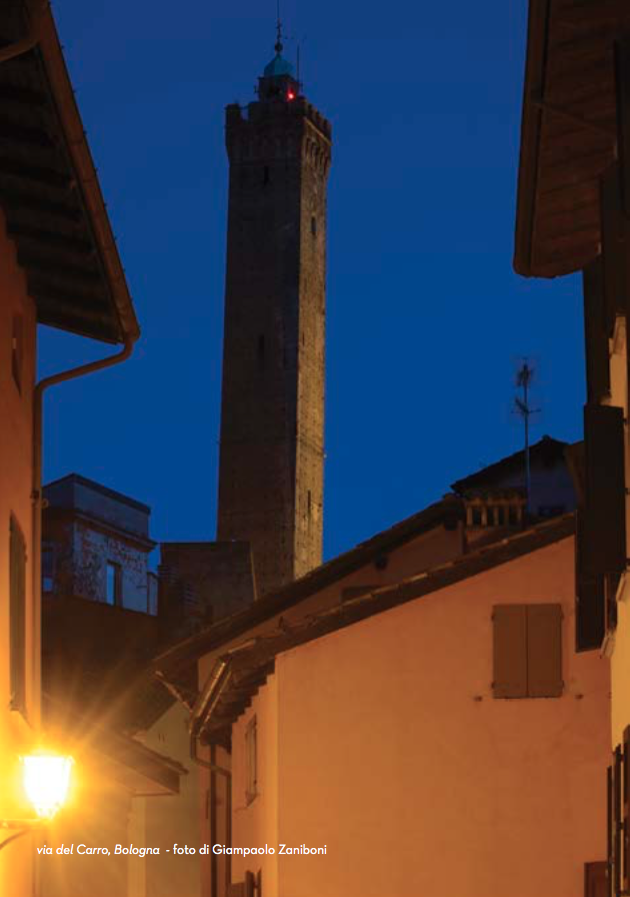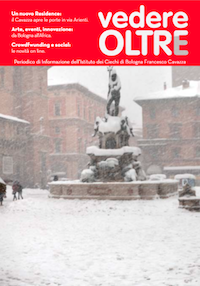To some extent, toponymy is used to indicate what was the origin and destiny of that particular and impressive part of the city located at the foot of the Two Towers, in the heart of Bologna: Via dell’Inferno, Via dei Giudei, Via Canonica, Vicolo di S. Giobbe. The original urban structure is well preserved and is reminiscent of the destination given to the sector: narrow streets, very few arcades, raised walkways that connect together the different homes. And the peaceful atmosphere, almost out of time, that one can breathe here. We are in what was Bologna's Jewish ghetto (a city where already from year 300 lived and worked Jews "in random order"), established there in 1555 in accordance with a Papal bull (CUM NIMIS ABSURDUM, issued by Pope Paul IV born Carafa) which stated that any city or town under the jurisdiction of the Church was to separate the Jews from the rest of the population, forcing them to live on only one street (the "Giudecca") or – if there were too many – in one district originally called the "seraglio of the Jews" and later the "Ghetto." But that is not all: the ghetto was to be enclosed by a wall with entrances and exits barred by gates, which were closed from dusk to dawn and controlled by guards paid by the Jews themselves.

The ghetto in Bologna was delimited by Via Zamboni, Via Oberdan and Via Marsala (the actual names) and had three access gates: one at the entrance to Via dei Giudei, very close to the Garisenda Tower; another one was in Via Oberdan, in the arch next to the Mandria alley through the Tubertini alley. The third one is in today's Via Zamboni (underneath the arch topped by a mask with an open mouth, alongside the Malvasia Palace). And it is the only one still recognizable today. In the small streets of the ghetto there was only one synagogue on Via del Carro 16. And in the small handicraft shops were carried out very specific activities: pawnbroking, silk and fabric markets, printing works, the latter highly qualified and efficient. The bull of Paul IV then fell like a clap of thunder in a calm sky over a pacific and industrious reality, in such good relations that led to the gradual growth of the Jewish community, whether under the rule of Bentivoglio or – since 1506 – the rule of the Papal State.

The worst came in 1569: with another bull (HEBRAEORUMGENS), Pope Pius V Ghislieri required the Jews in Papal Dominions to leave all cities, except Rome and Ancona. In Bologna, about eight hundred people were forced to leave the ghetto, which was like a ghost town until 1586 when it was possible to return. The Jewish presence in the Bologna ghetto, however, did not last long because in 1593 Pope Clement VIII, with the bull CAECA ET OBDURATA, ordered by decree their definitive expulsion. The typical district was thus abandoned, though between the end of 300 and 1593, it had been a very busy centre of Jewish culture. At the end of 400, two renowned printers had worked there (this is where was made the first edition of the Jewish Pentateuch with Rashi's commentary). In 1464, the Hebrew chair was established at the Studio Bolognese. In 1525, Ovadià Sforno, physician, philologist and philosopher, founded and directed a school for Talmudic studies. There were thriving banking activities, wheat and hemp trade as well as textiles. Then there was silence in the ghetto streets, until the advent of the Cispadane Republic and Napoleon who restored the freedom of religion for Jews, recognized as full citizens. Again, this does not last long: in 1815, Bologna is back under the rule of the Papal State which one again repeals all rights and reinstates all previous prohibitions. Only with the annexation of the Papal Legations to the Kingdom of Italy, in 1859-60, the Jewish community regained freedom and was able to live and work without territorial restrictions.
Spared by the bombings of World War II, this picturesque historic portion of the city is located at the heart of the medieval centre where stands one of the surviving towers (the Uguzzoni Tower). After the respectful restoration done by the City of Bologna from the ‘80s, it has been enriched by a Jewish museum and has cleverly protected its historical and environmental DNA.






.png)